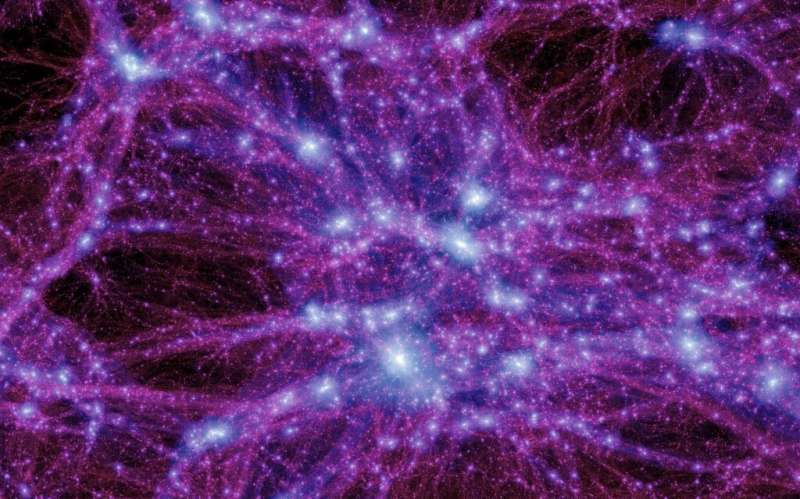December 15, 2020 feature
New constraints on alternative gravity theories that could inform dark matter research

While particle theories are currently the most favored explanations for dark mater, physicists have still been unable to detect dark matter particles in ways that would confirm or contradict these theories. Some theorists have thus been exploring new theories of gravity that clearly account for and explain the existence of this elusive type of matter. In order to obviate the need for dark matter, however, these theories should be aligned with cosmological observations gathered so far.
Two researchers at the Jet Propulsion Laboratory (JPL) and Princeton University have recently carried out a study aimed at better understanding what points alternative theories of gravity should address in order to effectively back the existence of dark matter in the universe. Their paper, published in Physical Review Letters, outlines a series of constraints that could help to determine the potential validity of alternative gravity theories.
The standard cosmological paradigm, ΛCDM , explains how the current universe developed from cosmic microwave background (CMB), essentially painting a 'picture' of the universe's development from its early days up until today. The evolution of the CMB's structure into galaxies and the present cosmic web structure could be justified by the existence of cold dark matter (CDM).
"We wanted to see if we could use the CMB data and the galaxy data available today to place some constraints on how an alternative gravity theory would need to behave if it was to explain dark matter," Kris Pardo, one of the researchers who carried out the study, told Phys.org. "Basically, if it is actually some alternative gravity that is responsible for dark matter, then it should be able to explain exactly how normal matter evolves from the CMB to today."
The core idea behind the study carried out by Pardo and his colleague David N. Spergel has already been explored by other researchers, including by Scott Dodelson at the Kavli Institute for Cosmological Physics in a paper published in 2011. Nonetheless, Pardo and Spergel were the first to actually calculate the function summarizing this idea.
"We showed that any theory that tries to explain dark matter by changing gravity (rather than by having a new particle) would need to have a very unique form," Pardo explained. "In fact, this form would be so unique that it would probably lead to some pretty crazy motions of galaxies near us, which we see no evidence for. So the simplest explanation for dark matter is still that it is some particle."
The recent study by Pardo and Spergel set new constraints on the specific qualities that alternative gravity theories should have in order to support the existence of dark matter. Interestingly, the researchers found that none of the theories of gravity proposed so far satisfy these constraints, which suggests that if dark matter can be explained by such theories, a valid theory has not yet been developed. In the future, their work could inform the development of alternative gravity theories that are more aligned with cosmological observations.
"In our study, we assumed that the alternative gravity theory had to be 'linear,'" Pardo said. "We're now looking at how to expand this to nonlinear theories."
More information: What is the price of abandoning dark matter? Cosmological constraints on alternative gravity theories. Physical Review Letters(2020). DOI: 10.1103/PhysRevLett.125.211101.
Journal information: Physical Review Letters
© 2020 Science X Network




















